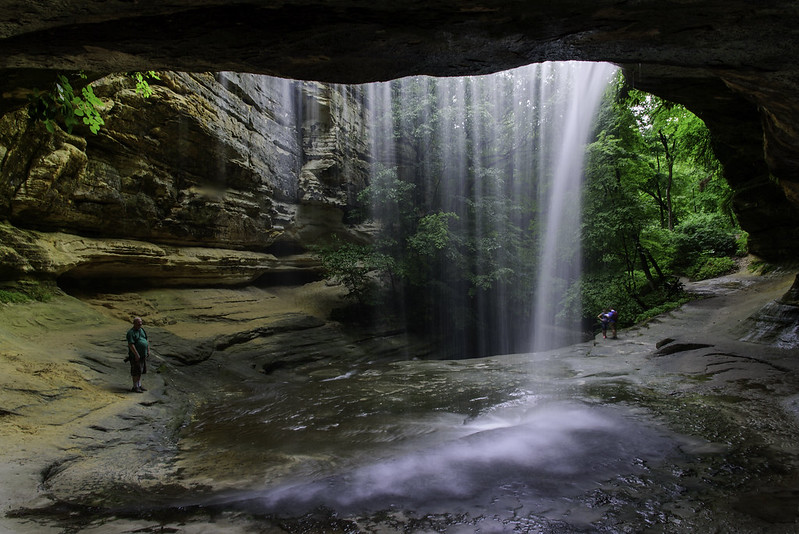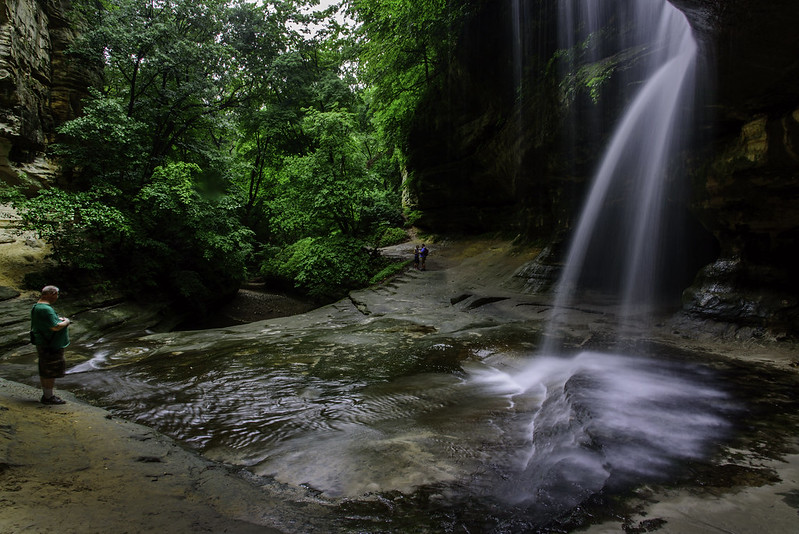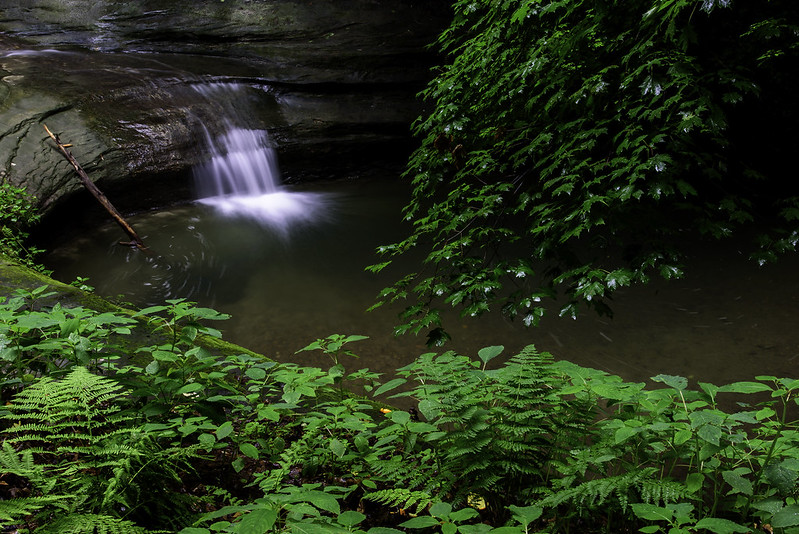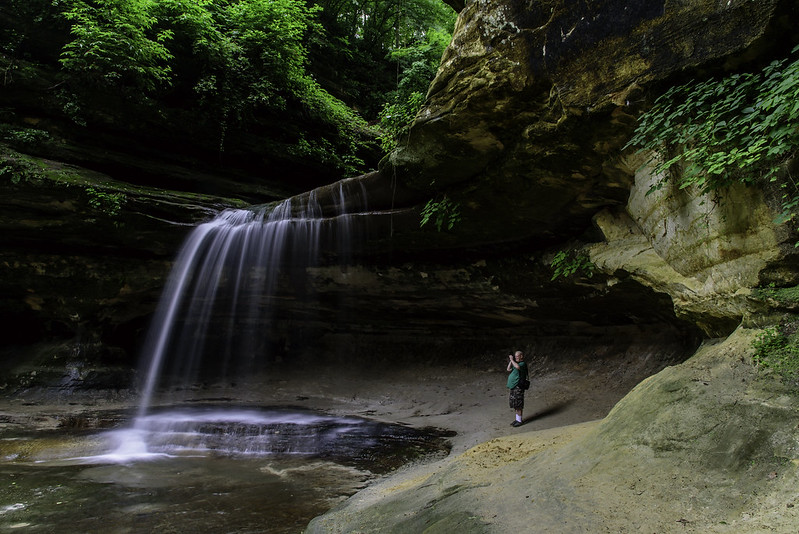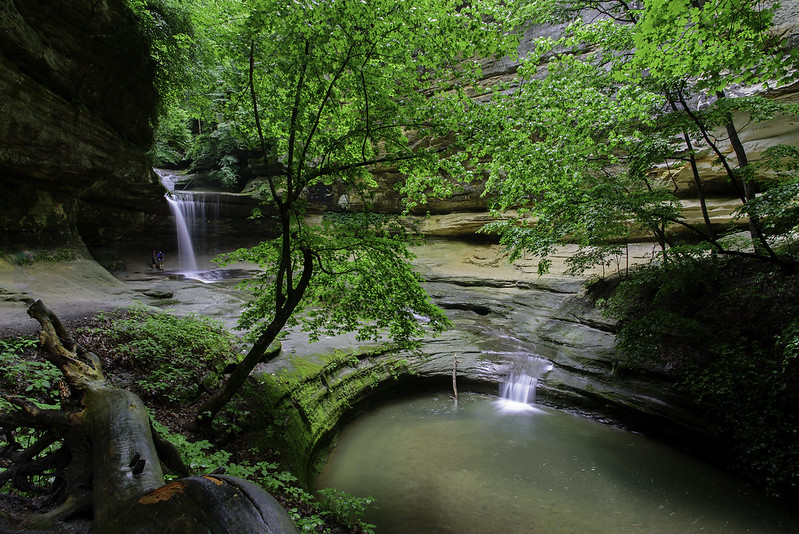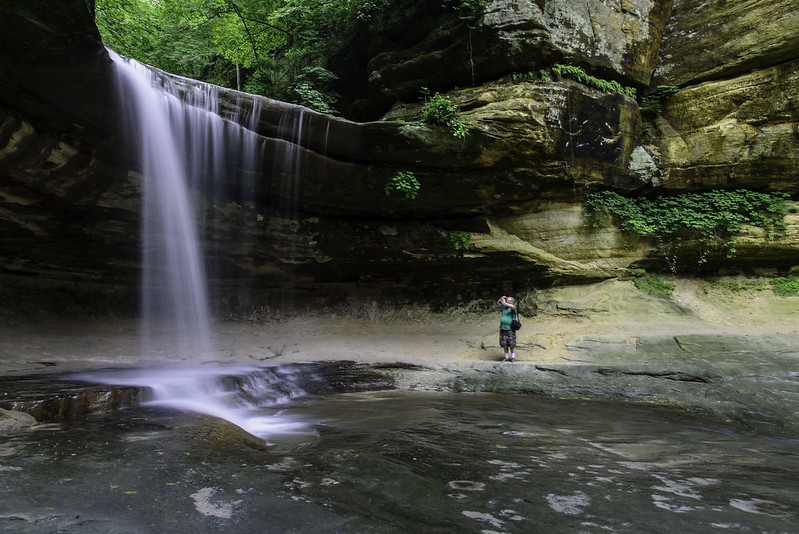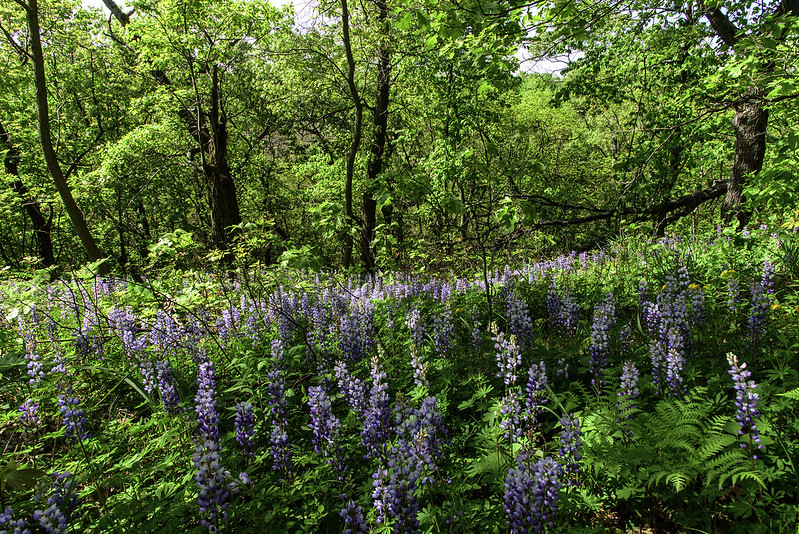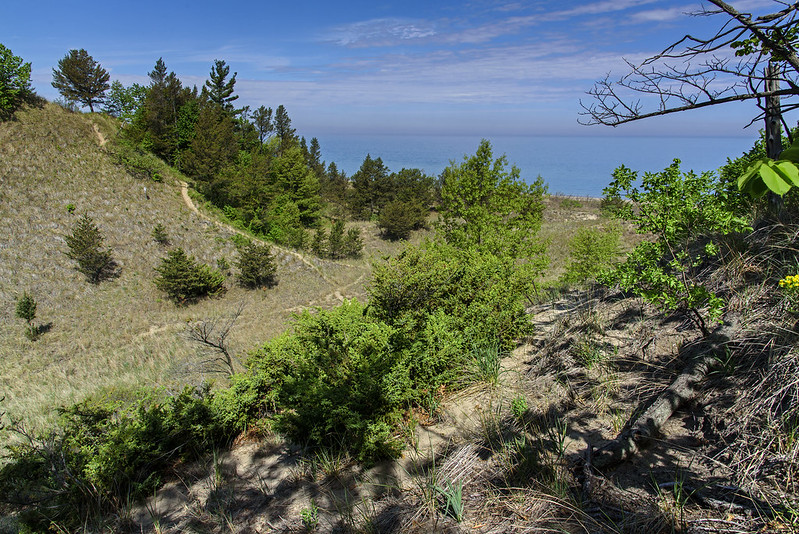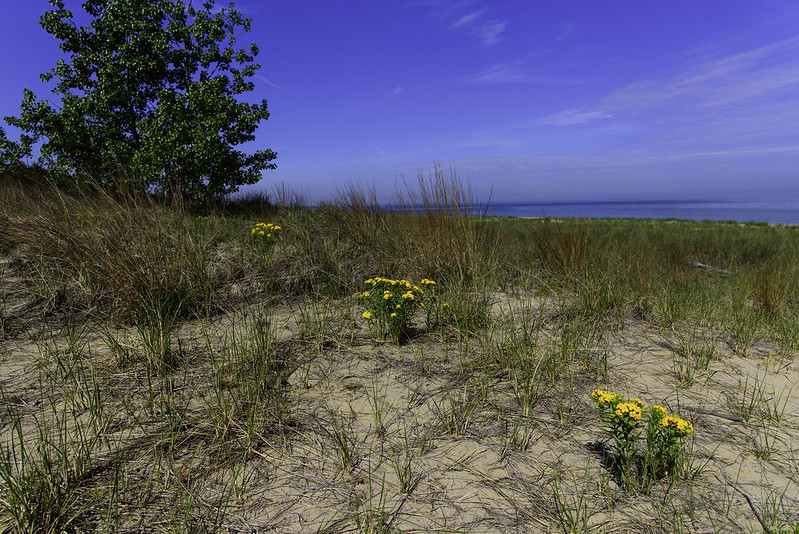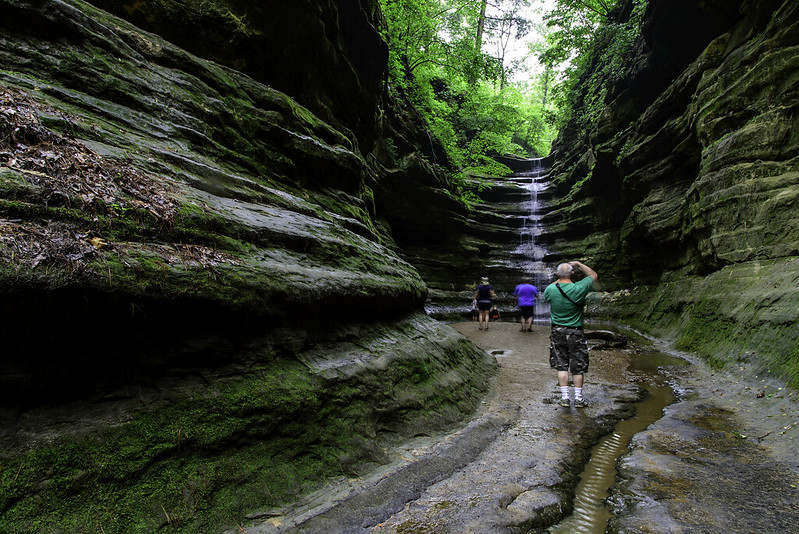
One of the closest canyons to visit in Starved Rock State Park is French Canyon. Just a few hundred meters from the parking area, it's a popular destination for visitors. However, the narrow canyon makes it just a bit tricky to walk up a short portion of the stream. The canyon narrows to about 4 feet, and the running stream to about 18 inches, so one must walk in the water to access the end of the blind canyon and see the dramatic waterfall.
While only your shoes will get wet, you can climb up without getting any water on you what so ever. Pressing a foot against the right side of the canyon wall, then quickly pressing the other against the left wall, then repeating. This way, you never set foot in a drop of water. Winter... that's a different story.
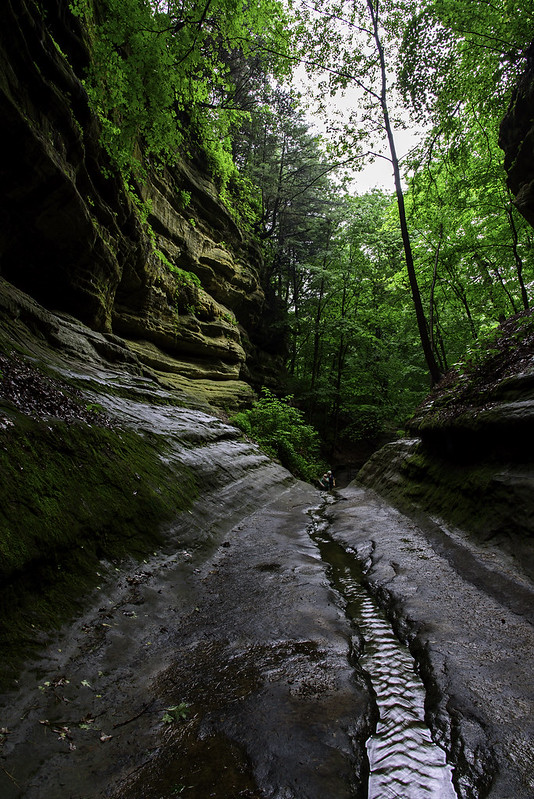
The waterfall is known for the multi-level cascade where the water never leaves the rock face. This creates a spectacular frozen sculpture in winter, and a soothing fall all year round.
